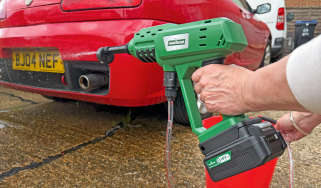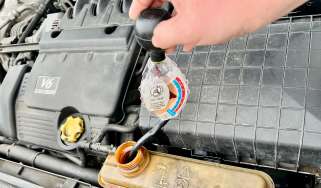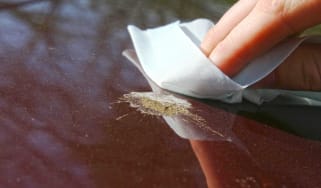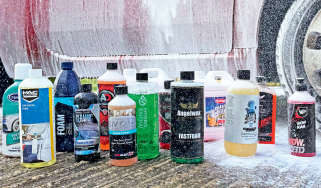How to remove car paint scratches
Scratches and scuffs can ruin your car’s looks and lose you money when it’s time to sell it. Here’s how you can remove scratches and scuffs from your paintwork…
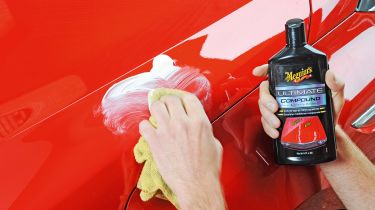
Every car owner will know the dreaded feeling of discovering a new scratch, scuff or ding on their car's paintwork – especially after parking in a tight spot or driving past overgrown bushes down country roads. These marks don’t have to be an inevitable part of modern motoring, but what is the best way of removing them? We outline your best options below.
Looking after your car's paintwork is a simple way of retaining its visual appeal and slowing down the ageing process. You don’t just risk a visual hit from a car that’s been scratched and scraped over time – you could also lose out financially when it’s time to sell your car, because a scuffed or damaged car won’t be worth as much as one that’s in pristine condition. This is especially worth bearing in mind if you lease a car or have bought one through finance, because the car’s predicted value at the end of the agreement will be dependent on what condition it’s in. If the scrapes and scratches are particularly bad, you could face hefty repair shop bills, too.
Thankfully, depending on how serious the scuffs or scratches are, you might be able to remove them on your driveway, without needing to visit a body repairer. If the damage is light and only affects the clear coat top layer or base layer of your car’s paintwork, you might be able to fill in the dings yourself at home using scratch repair kits and car care products such as T-Cut, which you can find online or in motor parts stores.
Bigger or deeper scuffs, scratches, dents and stone chips might require the expertise of a qualified Small to Medium Area Repair Technique (SMART) technician, who will be able to repair the panels and blend the paintwork back to looking like new. There are even mobile SMART technicians who can repair your car from your driveway or office car park.
But which repair is right for you? Below we round up how you can fix varying degrees of damage, and highlight the kit that can get your car looking like new again.
Can I fix car paint scratches and scuffs myself?
Before figuring out which repair will work best on your car, it’s important to assess the damage. Your car's paintwork consists of three layers: clear coat (top layer), base coat and primer, with the metal or plastic panel beneath.
Small surface scratches that only impact the clear and/or base coat can be repaired from your driveway with scratch-repair kits or car care products. A quick test you can do to determine the severity of the damage is by running the tip of your thumb or fingernail over the scratches. If your nail doesn’t feel the scratch, you should be able to remove it by using scratch removers or T-Cut.
If your nail can feel the scratch or scuff, then the damage runs a few layers deeper, affecting the primer coat or plastic or metal bodywork. The likelihood is you’ll require the services of a professional garage or paintwork technician.
While calling in the professionals isn’t cheap, it could be the best way of restoring your bodywork to its shiny best. Sometimes repair technicians can even carry out the job from your driveway or place of work.
How to use a scratch remover or T-Cut
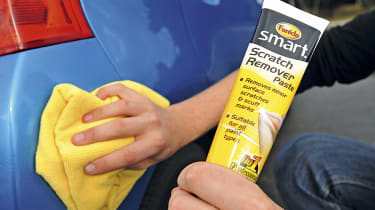
Using a scratch remover like T-Cut is fairly straightforward, but you will need to do some preparation work beforehand.
Scratch removers are a super-fine abrasive liquid or paste, so before rubbing one into your paintwork, it’s best to read the maker’s instructions in case you need any specialist buffing or polishing tools.
Before tackling the scratched or scuffed area, you’ll need to wash your car thoroughly to remove any surface contaminants and road grime. By doing so, you’ll avoid rubbing any grit or debris into the paint surface, damaging it further. Using a dedicated car shampoo, rinsing the car down and drying it with a clean, dry cloth will yield the best results.
Once the car has been washed and dried, the surface will be ready to receive the scratch-removal agent. In most cases, you’ll need to apply a small amount of the solution (around the size of a 10p coin) onto a cloth or buffing tool, spreading it evenly on the cloth to ensure a good application.
Now you can work the solution into the affected area, working in a circular motion and applying evenly. Remember, you’re essentially removing layers of paint, so you don’t want to go too deep; only apply light amounts of pressure and move in one direction. If your cleaning cloth starts turning a different colour, that means you're down to the paint layers, and you've removed the protective lacquer on top of it.
Once you’ve finished working on one area of the scratch, buff any excess product off with a clean microfibre cloth – because some scratch removers can damage the paintwork if they’re left to dry. If necessary, repeat the process to remove the scratch further but be sure to read the instructions and ensure you don’t over-apply the solution. Finally, polish your car's paintwork once completed to add an extra layer of protection.
You can also buy scratch remover that is coloured to match your car's paint. Not only will this tidy up any scratches, it will also boost the colour of your car. However, these products really work best on solid colours rather than metallics, and may give your car a slightly different tint if you don't quite get the colour match right.
If you’re worried about going too deep, it might be worth investing in a paint depth gauge. You can pick one up for around £20, and this will tell you how much paint and clearcoat you have to work with before you get through to the lower layers, or even the basecoat, primer or bare bodywork.
How to remove paint swirls from your car’s paintwork
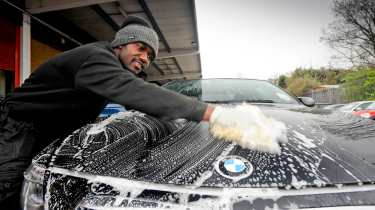
So you've just finished washing your car, but you’ve noticed paint swirls in the top coat of the paint lacquer. These swirls will be caused by particles of grit and dust getting stuck to the cleaning cloths and sponges that you're using as you wash and dry the car. The best way to avoid this happening in the first place is to use a grit guard in the bottom of your wash bucket. This will prevent the sponge or cloths from picking up debris and dirt in the water and moving it back onto the car.
Removing swirls from your car's bodywork is something that can easily be done on your driveway using a scratch remover. Simply follow the process mentioned above to get your bodywork looking like new. If you can get the light at the right angle to see the swirls, it should be obvious as they disappear.
How to use a touch-up paint pen
If it's a really small ding in your paintwork, such as a stone chip, then you can get touch-up paint pens to fill it in.
Before using a touch-up paint pen, you’ll need to wash your car to remove any contaminants to ensure the paint adheres to the surface. Once that’s done, shake the pen for a few minutes to ensure the paint pigments mix correctly and dry in an even manner.
Then, simply apply the pen to the damage, working and building layers in stages, waiting around 15 minutes in between each layer, giving the paint a chance to dry.
When it’s finished, you’ll need to wait a further hour, allowing the paint to cure before applying a clear lacquer to seal the surface.
How to repair car park scrapes
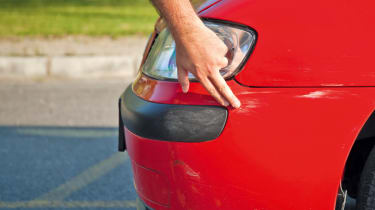
If you've had a light brush with a wall or post in a car park, there might be a bit more damage to contend with. You can still use scratch remover to tidy up the looks, but if the colour coat has been damaged – or you've scraped down to bare metal or plastic – then you'll need something more substantial to fix the damage.
Fortunately, there are kits available that allow you to carry out DIY repairs. These will come with a variety of polishes, treatments and brushes to get damage looking like new.
While some products give you paint that you need to mix to match your car's paint, you can also get kits with your car's specific paint colour in them. All you need to do is find your car's paint code (usually on the vehicle's VIN plate) when you buy one of these kits.
To work with a kit, you generally follow the same procedure as for scratch removers: clean the affected area, paint in the damaged section with a brush, allow the paint to dry, then polish the area down so it’s smooth with the rest of the paint. After that, you can clean the car with wax to give the damaged area some additional protection.
SMART repairs
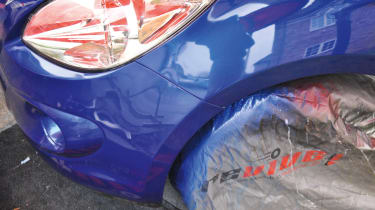
Perhaps the easiest way of fixing scratches on your car's bodywork is to contact a local SMART repair specialist. These businesses will usually come to you to fix any damage, and these professionals will be able to bring the damage back up to showroom standard far more quickly and easily than you could.
SMART repairers can fix most kinds of scratches and even minor dents, too, while alloy-wheel refurbishment is also possible. And while they'll be a bit more expensive than buying a repair kit, their work should be guaranteed, and it'll cost far less than a visit to a bodyshop.
How much does it cost to repair a scratch or scuff?
This all depends on the severity of the damage to the paintwork. A scratch-removal kit or touch-up paint pen will set you back somewhere in the region of £20, while tubes of T-Cut can cost less than £5.
SMART repairs will cost considerably more, but is really worth considering if you want your car looking in tip-top condition. Some car insurance providers may cover you for cosmetic repairs so it’s worth double-checking before forking out your hard-earned money, but keep in mind that it may impact your no-claims bonus.
Want the latest accessories for your car? Read our picks of the latest and greatest kit for your car...
Find a car with the experts



